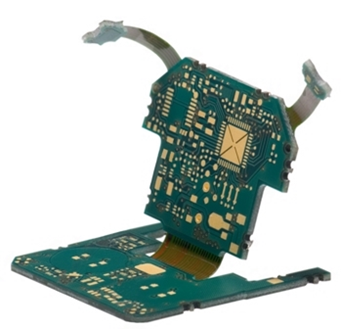
Support Team
Feedback:
support@nextpcb.comRigid-flex PCB is a new type of printed circuit board with the adaptability of a flexible PCB and the durability of a rigid PCB. Among all types of PCBs, the combination of rigid PCB and flexible PCB is the most resistant to harsh environmental applications, so it is favored by industrial control, consumer electronics, medical, and military equipment manufacturers.
Just as the name implies, a rigid-flex PCB is a standard rigid board attached to a flexible PCB during the PCB assembly process. The flexible portion is usually used to connect the main rigid PCB to other boards or another device in post-production or to satisfy the shape or space constraints.

The difference in the rigid-flex PCB assembly process
The SMT process of rigid-flex PCB assembly is the same as the rigid PCB and the flexible PCB because they all need to pass the solder paste soldering process, component placement, and reflow soldering. However, there are some unique points should be considered for rigid-flex PCBs. It will prevent great trouble if these additional requirements can be fulfilled in the assembly process.
l Solder paste process
As the same with the rigid PCB, the solder paste is applied to the rigid-flex board through the operation of stencil and solder paste printer. But workers are plagued by the size and vulnerability of the board in the process. Unlike rigid boards, the flexible board’s surface is not smooth, which means it needs to be held in place by fixtures and positioning holes. Besides, flexible materials are not stable in size and will extend or fold with the changes in temperature and humidity. For this reason, rigid-flex PCB assembly often requires smaller carriers than a rigid board.
l SMT components placement
In the current trend of miniaturization of SMT components, small components will cause some problems during reflow soldering. If the rigid-flex PCB is tiny, the extend or fold will not be a significant problem, but it will lead to smaller SMT fixtures or additional mark points. And the lack of overall flatness of the fixture will also cause displacement in the SMT process, so SMT fixture is one of the factors to keep the surface flat in PCB assembly.
l Reflow process
The flexible part of the rigid-flex PCB must be dried before reflow soldering, which is an apparent difference in the assembly process between flexible PCB and rigid PCB. In addition to the dimensional instability of flexible materials, they are also relatively hygroscopic, and they absorb water like sponges. Once the flexible part of the board has absorbed moisture, it must stop the reflow soldering process. Therefore, flexible boards need to be pre-baked before using, and the preheated baking must be completed quickly within one hour. If it is not baked in time, it needs to be stored in a dry or nitrogen storage.
Compared to the rigid PCB manufacturing, the manufacturing process of the rigid-flex PCB is a little complex and time-consuming. But rigid-flex PCBs own obvious advantages such as more light, flexible size, more reliable connection, dynamic, and mechanical stability, etc. The characteristics of the rigid-flex PCB determine its application area covering the entire application area of FPC, and rigid-flex PCB is becoming an essential direction for the development of the PCB industry. The demand for Rigid-flex PCB manufacturing and assembly prototype is also increasing quickly.
Still, need help? Contact Us: support@nextpcb.com
Need a PCB or PCBA quote? Quote now
Still, need help? Contact Us: support@nextpcb.com
Need a PCB or PCBA quote? Quote now
|
Dimensions: (mm) |
|
|
Quantity: (pcs) |
|
|
Layers: |
Thickness: |
|
|
|